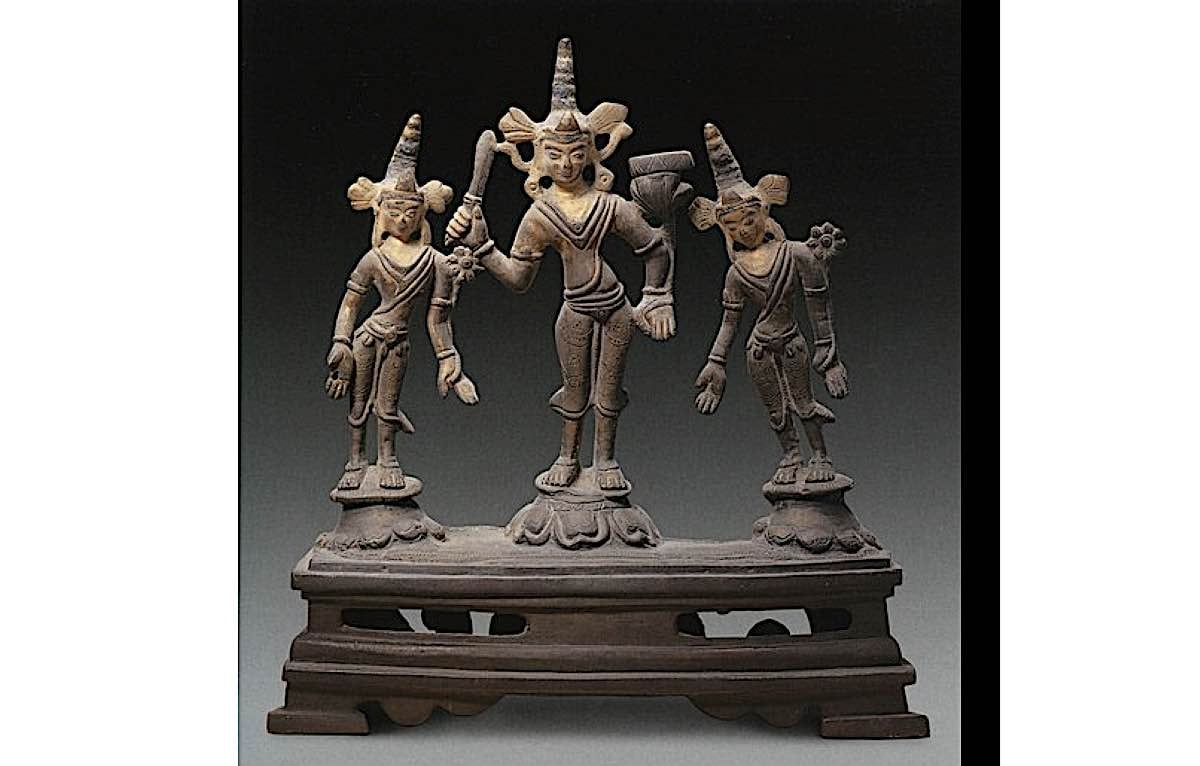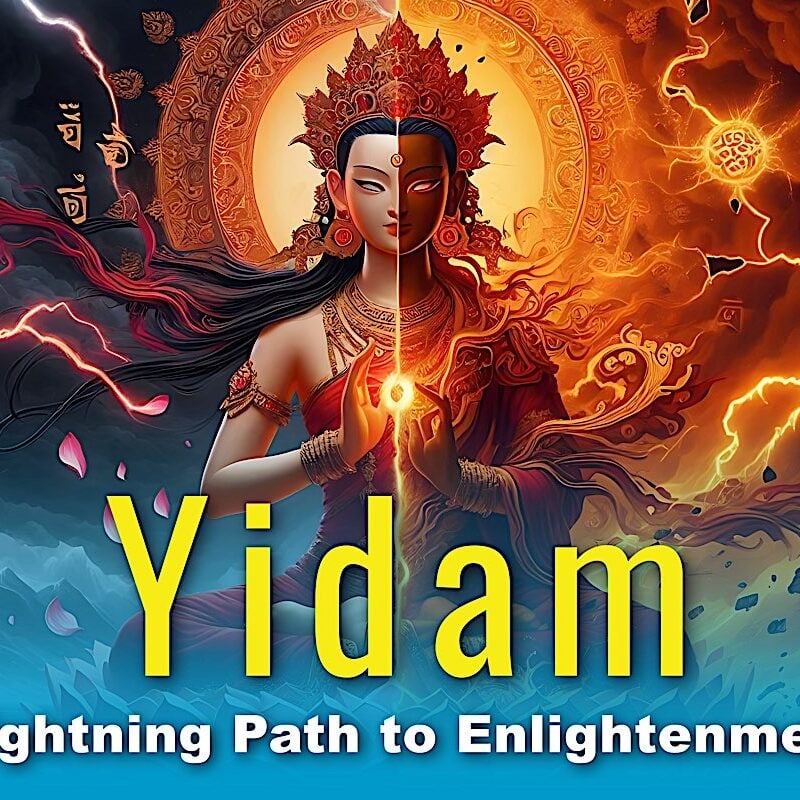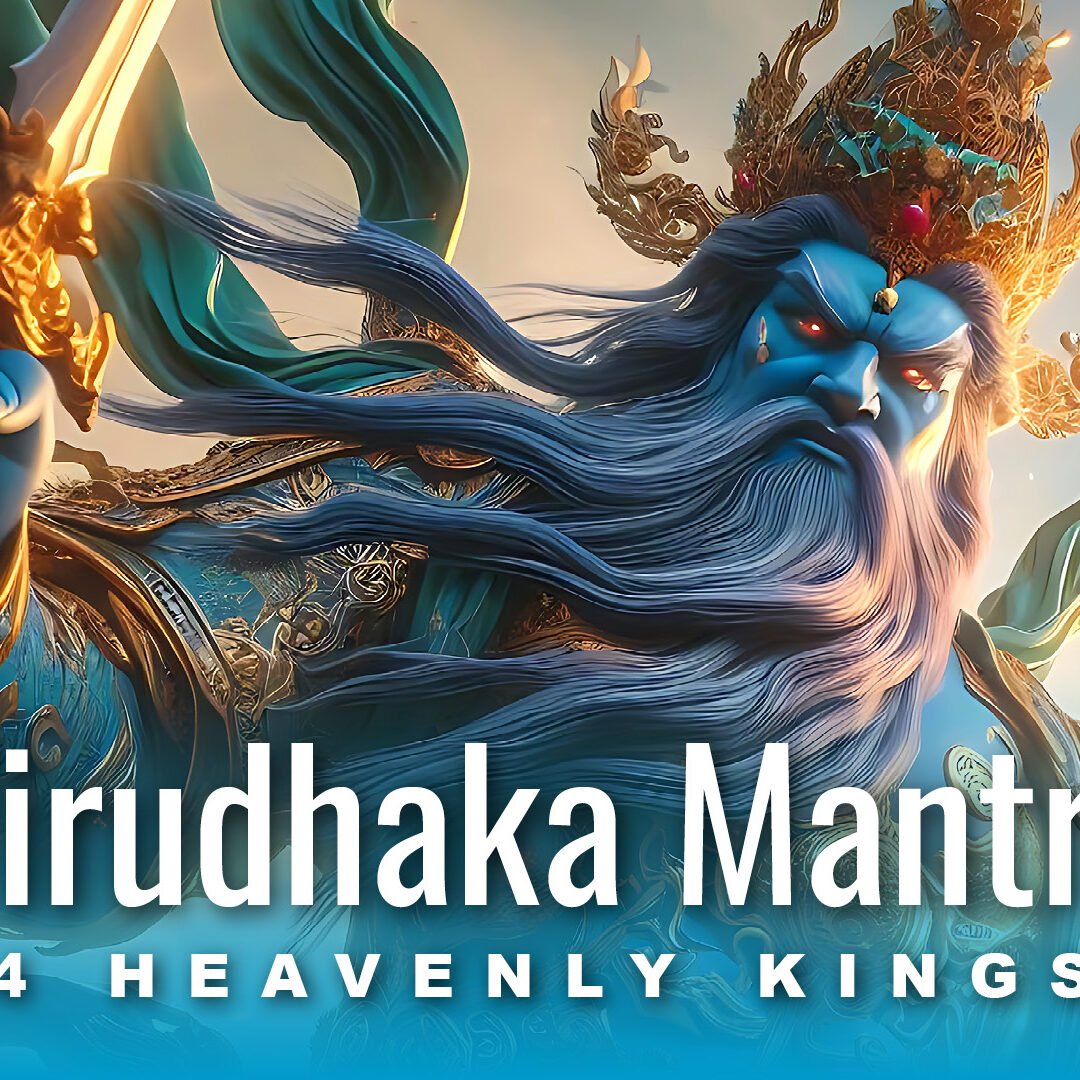Video: 3 great Bodhisattvas Manjushri, Avalokiteshvara and Vajrapani — mantras and introduction: bring the wisdom, compassion & power of the 3 Lords into your life
What are the three key aspects of Buddhist Practice? What Bodhisattvas represent these key foundations in Buddhism? How can we bring them into our lives? In this Buddha Weekly video, we introduce the Three Lords of the World, Avalokiteshvara, Manjushri and Vajrapani, the Three Great Bodhisattvas. We also present their mantras, here chanted together beautifully by Hrishikesh Sonar:
The Three Great Bodhisattvas Practicing Wisdom, Compassion, and Power with — Manjushri, Avalokiteshvara and Vajrapani.
To navigate the video by topic with time:
CONTENTS by Topic
00:00 Opening: Three Great Bodhisattvas
01:16 The Three Aspects of Buddhist Practice: Wisdom, Compassion and Empowered Activities (Power)
02:58 The Two Wings of Enlightenment: Wisdom and Compassion
03:30 Manjushri, Bodhisattva of Wisdom
04:05 Avalokiteshvara Chenrezig, Bodhisattva of Compassion
04:45 Vajrapani, Bodhisattva of Power and Enlightened Activities
06:37 Mantras begin for all three Bodhisattvas (7 of each, then 1 of each, then 7 of each)
What are the three key aspects of Buddhist Practice? What Bodhisattvas represent these key foundations in Buddhism? How can we bring them into our lives? In this Buddha Weekly video, we introduce the Three Lords of the World, Avalokiteshvara, Manjushri and Vajrapani, the Three Great Bodhisattvas. We also present their mantras, here chanted together beautifully by Hrishi.
Before we begin, if you enjoy this presentation, please like and subscribe to Buddha Weekly’s channel.
Please visit our popular Dharma website at BuddhaWeekly.com with its large library of free Buddhist features, articles, videos, and podcasts — covering all traditions of Buddhism.

Wisdom, Compassion and Powerful Activity
Cultivating Wisdom, Compassion and Activity are the key aspects of Buddhist Practice. These are represented by the “Three Lords of the World” — the three great Bodhisattva heroes who promised to remain in Samsara until all sentient beings are rescued. The Three Lords of the World are Manjushri, Bodhisattva of Wisdom; Avalokiteshvara, Bodhisattva of Compassion; and Vajrapani, Bodhisattva of Power and activities.
These great Bodhisattvas appear often in Sutra (Sutta, Pali), usually with folded hands, baring their shoulder to ask the Buddha an important question. Sometimes, they are the focus, as with Avalokiteshvara speaking (with Shakyamuni Buddha listening) to the Heart Sutra — one of the most important sutras in Mahayana Buddhism. Or, with Vajrapahni as the inquirer in the Maha Vairochana Sutra.

Why these Three Out of the Eight Great Ones
In Buddhism, especially Mahayana, the three great Bodhisattvas, called the Three Lords of the World, are the most important practice. Why? Because they remain in our world, working to help us, and their focus is to empower wisdom and compassion.
There are Eight Great Bodhisattvas, traditionally, in Buddhism, but, in many temples and practices, the Three Lords of the World are preeminent.

Wisdom and Compassion — Plus One!
Wisdom, represented by Manjushri, and Compassion, represented by Avalokiteshvara, are often called the two wings of Enlightenment. These two essential qualities for practice also require activities and power to be effective. Intellectual understanding and meditation on Wisdom and Compassion require the power of Enlightened activities, represented by Vajrapani. Together, the Three Great Lords of the World represent the three key aspects of Buddhist practice.
Manjushri, Bodhisattva of Wisdom
Manjushri is the Bodhisattva of Wisdom, the embodiment of all the Buddhas’ wisdom. He is often shown holding a sword in his right hand which cuts through conceptual delusions, and a lotus blossom in his left hand which represents the purity of his mind.
He is usually portrayed as a young prince, beautiful and serene, with golden skin. His name means “Gentle Glory”.

Avalokiteshvara Chenrezig, Bodhisattva of Compassion
Avalokiteshvara (Chenrezig in Tibetan) is the Bodhisattva of compassion, and the patron deity of Tibet. He is often shown with eleven heads, representing his all-seeing wisdom, and a thousand hands, representing his ability to help all beings. In some countries, his compassionate appearance transforms into beautiful and compassionate Guan Yin or Kannon. As with all Enlightened Bodhisattvas, he can appear in countless forms, to symbolize his many activities.
His name means “Lord who Looks Down”.

Vajrapani, Bodhisattva of Power
Vajrapani is the Bodhisattva of Power, the embodiment of the power of all the Buddhas. He is often shown holding a vajra or thunderbolt in his right hand and a lotus blossom in his left.
He is usually portrayed as a muscular man, with dark blue or black skin, representing his power. His name means “Lord of the Vajra”. He also has a “wrathful form” where his face transforms into the angry face of an awesome Raksha being, his muscles bulge and he “hulks” up into the Incredible
Hulk aspect of the Bodhisattva of Power.
Together, the Three Lords of the World
The Three Great Bodhisattvas: Three Lords of the World — Manjushri, Bodhisattva of Wisdom, Avalokiteshvara Chenrezig, Bodhisattva of Compassion, Vajrapani, Bodhisattva of Power, are therefore the most important practice for those seeking Enlightenment. They embody the three essential qualities required for Enlightenment — Wisdom, Compassion and the Power of Englightened Activity — in perfect balance.
In addition, they are also the most important practice for those seeking to help sentient beings — including ourselves — since they remain in our world, working to help us. Their compassion and power are always available to those who call on them.
Their wisdom, compassion and power are always available to those who call on them. The best way to practice them is to sit quietly, visualize them as clearly as you can, and chant their powerful blessing mantras.
Chant along now with the beautiful voice of Hrishikesh Sonar, as he chants each mantra seven times, then all three together one time each, then seven more of the three mantras.
More articles by this author
Search
Latest Features
Please support the "Spread the Dharma" mission as one of our heroic Dharma Supporting Members, or with a one-time donation.
Please Help Support the “Spread the Dharma” Mission!

Be a part of the noble mission as a supporting member or a patron, or a volunteer contributor of content.
The power of Dharma to help sentient beings, in part, lies in ensuring access to Buddha’s precious Dharma — the mission of Buddha Weekly. We can’t do it without you!
A non-profit association since 2007, Buddha Weekly published many feature articles, videos, and, podcasts. Please consider supporting the mission to preserve and “Spread the Dharma." Your support as either a patron or a supporting member helps defray the high costs of producing quality Dharma content. Thank you! Learn more here, or become one of our super karma heroes on Patreon.
Lee Kane
Author | Buddha Weekly
Lee Kane is the editor of Buddha Weekly, since 2007. His main focuses as a writer are mindfulness techniques, meditation, Dharma and Sutra commentaries, Buddhist practices, international perspectives and traditions, Vajrayana, Mahayana, Zen. He also covers various events.
Lee also contributes as a writer to various other online magazines and blogs.



















